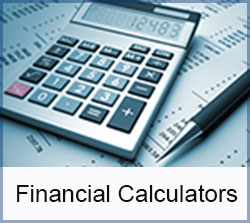Steps to Avoid the OAS Clawback

According to the Canadian government website, Old Age Security is the largest pension program in Canada. OAS pays a monthly income to seniors who are age 65 and over. The amount of the payment is not based on past income but rather how long you resided in Canada after the age of 18. If you have turned 65 you are eligible for the maximum OAS income if you have resided in Canada for at least 40 years after turning 18 AND have resided in Canada for at least 10 years prior to receiving approval for your OAS pension. There are some exceptions for those who don’t fully qualify based on temporary absences during that requisite 10-year period.
For the last quarter of 2018, the maximum monthly OAS payment regardless of marital status is $600.85. Don’t get too excited as, as the title suggests, the government can clawback part or all of your OAS benefit depending on your taxable income. As of 2018, you can earn up to $75,950 in annual taxable income (up from $74,788 in 2017) without affecting your payment. For every dollar earned over this threshold amount however, you will be taxed (referred to as an OAS recovery tax) at a rate of 15%. Once you reach taxable income in the amount of $ 123,386 the government will have fully recovered or clawed back the entire amount of your Old Age Security.
In order to avoid this clawback you may consider any of the following strategies:
Delay taking your OAS until your income reduces – If you feel that your taxable income will be less after age 65, you may want to delay taking your payment which can be done up until age 70. For each month delayed you will receive an increase in future monthly payments of 0.6%. This reaches a maximum increase in monthly payment of 36% if payments are delayed until age 70.
Withdraw from your Tax Free Savings Account – during this delay period you might wish to consider taking funds out of your TFSA. Since all payments out of a TFSA are tax-free this would not trigger an OAS clawback.
Consider the tax treatment of your non-registered investments – some investments are more tax friendly than others. For example, certain classes of mutual funds enjoy lower taxable distributions than others forms of investment. Eligible dividends, even with their 38% gross up for income tax purposes, still provide a better after-tax result than interest bearing instruments such as GIC’s and bonds. Cash value life insurance, which grows without any accrued taxation can also be very beneficial. The cash values can be borrowed against without triggering any taxable income and the death benefit could provide a significant bequest for your family or charity.
If you are converting your RSP’s to a RRIF – make sure to take your withdrawals based on your spouse’s age if he or she is younger. This will reduce the taxable reportable income.
Splitting RRIF, CPP or pension income – if you are 65 or older you may be eligible to split your income from these sources with your spouse or common-law partner.
Consider realizing capital gains before age 65 – if you are 65 or older, any taxable capital gains could result in an OAS recovery tax. For this reason, you may want to consider selling or liquidating those specific assets prior to age 65.
While these are the most popular methods often used, your particular situation may provide unique opportunities in avoiding the OAS clawback. If you are approaching age 65, now is the best time to let me help you in exploring these opportunities.


Comments are closed.